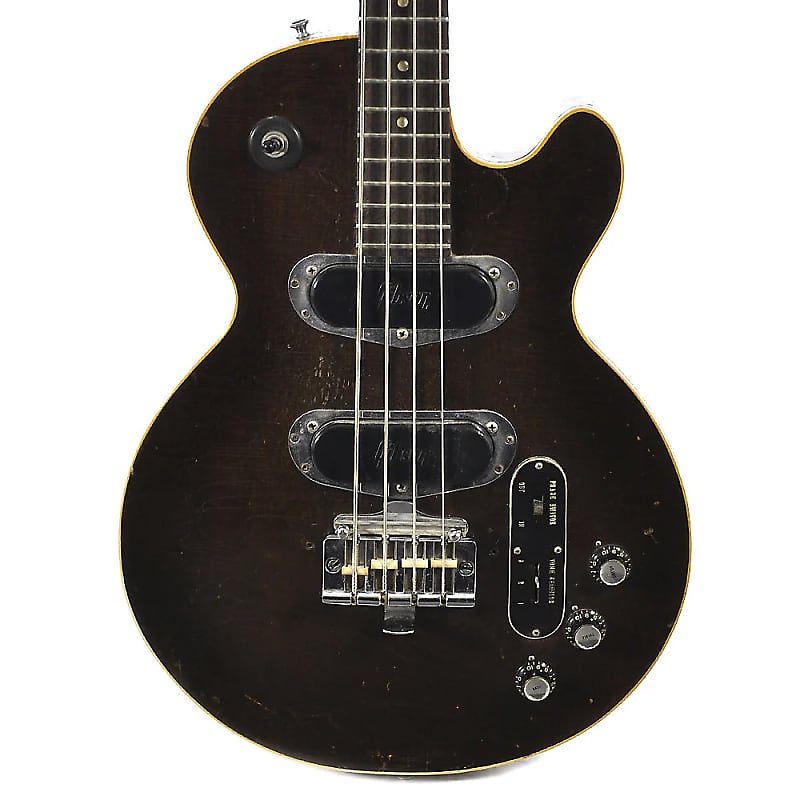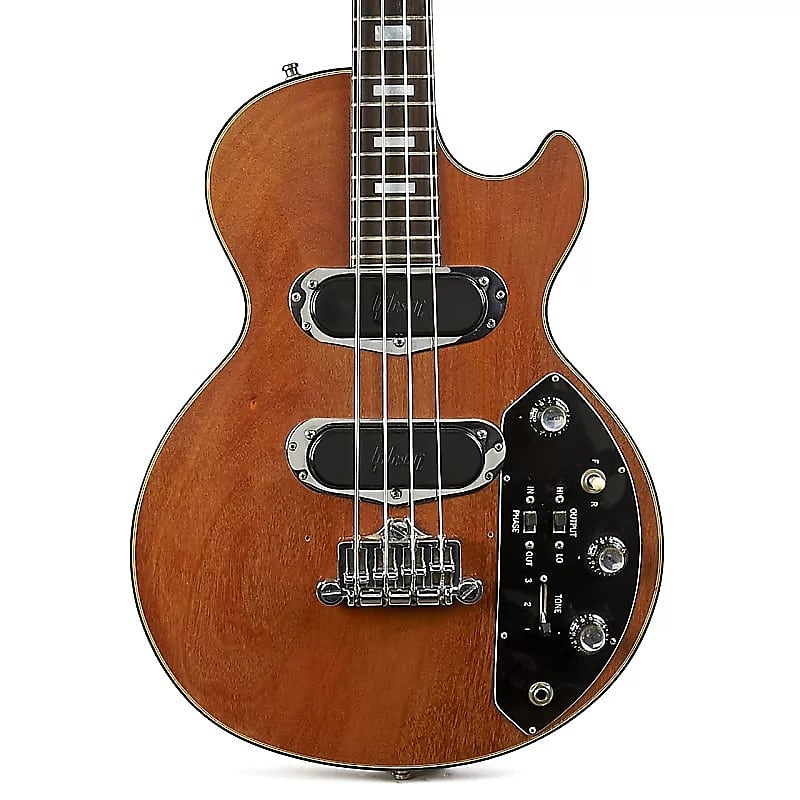Les Paul loved low-impedance pickups. He hated distortion, and instead sought clarity and highs and plenty of overtones. Les decided that low-impedance pickups could get him nearer those things, and he tinkered away to hone his personal sound.
However, in the late ’60s and into the ’70s, in a world dominated by high-impedance pickups, many guitarists were surprised when Les persuaded Gibson to release a series of commercial instruments designed around low-impedance pickups.
Today, low-impedance pickup components turn up more often, especially in active types, thanks to technical and practical developments along the way. Back in the ’70s, however, they were rare. Some ’60s Burns guitars and basses had low-impedance pickups, and later in the decade Alembic had some, appealing in particular to bass players. But Les, and then Gibson, were largely on their own.
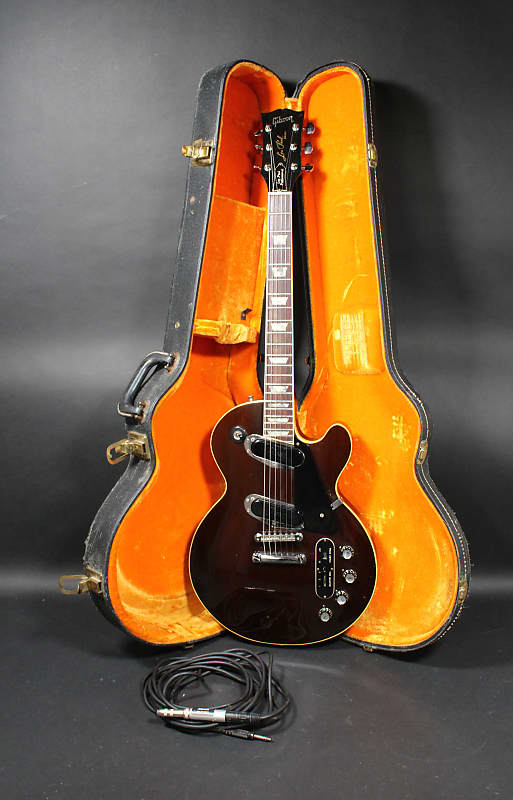
The primary attraction of low impedance in a pickup is wide-ranging tone. That might seem like an advantage, but the tonal range offered isn’t necessarily to everyone’s taste. A disadvantage is that low-impedance pickups need their power boosted before the signal reaches a regular amp (unless you plug the guitar straight into something that accepts low-impedance inputs—a studio mixer, for example—which is what Les would often do).
In 1967 a new recruit at Gibson, Bruce Bolen, was asked if he would stay late at the office one evening because Les Paul was visiting. He’d joined the company recently as a traveling guitar demonstrator, and management wanted the young Bruce’s opinion on something Les had to show them. "When I was a kid, six years old, Les Paul was my first guitar hero," Bruce tells me, "so I was thrilled to have the chance to meet him." And he recalls that while Les certainly discussed the plan to reintroduce original-style Les Paul guitars, which had been absent from Gibson lines since 1961, Les also had a new item he wanted to present.
"That was the low-impedance pickup," Bruce remembers. "He had a couple special guitars with them on, and I was asked to A/B these against our humbuckings—what did I think? Well, I was just a punk kid, and most of the people at Gibson were in their 50s or older—they really didn’t have a feel for what Les was trying to present there. So they were asking to use my ears, and it was such a revelation on frequency response! So of course, we did that. And they weren’t too sure they wanted to reintroduce the regular Les Pauls again. I was going Please!"
With hindsight, we know that both things happened. Gibson reintroduced single-cut Les Pauls in 1968, and a year later the first two low-impedance models appeared. Their names revealed some of the intention. The Les Paul Personal was crafted in the image of Les’s personal tastes and specifically one of his own modified Les Pauls, even copying its unusual feature of a microphone jack on the top edge of the body. The Les Paul Professional’s name, meanwhile, confirmed these guitars had serious intentions. The Les Paul section of a 1969 Gibson price list pitched the Personal at $645 and the Professional at $485, when a regular Custom was $575 and a Deluxe $425.
Each of these new Les Pauls had a slightly larger than usual (and heavy) mahogany body with "clear walnut" finish, fitted with a pair of slanted low-impedance pickups and an expanded array of controls. A familiar complement of volume, bass, treble, and pickup-selector ("Rear/Front") was augmented by an 11-position Decade control "to tune high frequencies," a three-position Tone Selector to create various in and out-of-circuit mixes, and an in/out pickup Phase Switch. The Personal added a dedicated volume control for that handy microphone input.
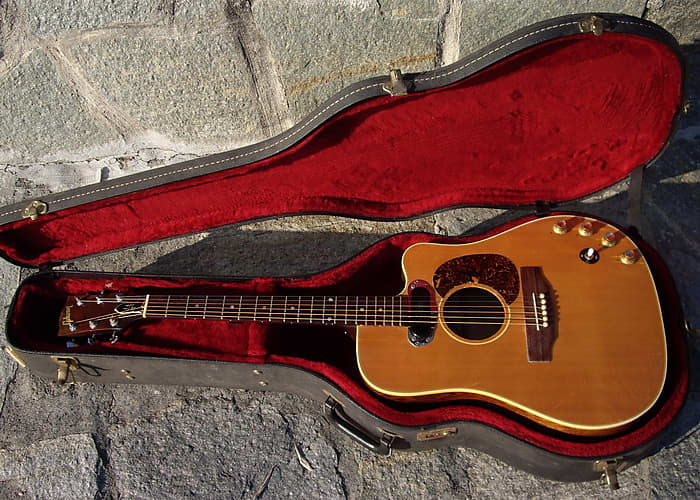
In 1970, Gibson launched a further low-impedance model, the peculiar Les Paul Jumbo, a flattop acoustic with round soundhole and single cutaway. It had a low-impedance pickup installed in the top and a row of body-mounted controls—volume, treble, bass, and the 11-way Decade from the Personal and Professional models, plus a bypass switch to isolate the tone controls. Very few Jumbos were made, and their final appearance, at $610, came on a 1971 price list.
To connect these models, Gibson supplied a two-piece cable with built-in transformer to boost the output from the low-impedance stacked-coil humbucking pickups to a level suitable for use with regular high-impedance amps. Gibson also produced a special "Monster" LP-12 combo amp and LP-1/LP-2 preamp/power-amp-and-speakers set. These had high or low impedance inputs, allowing the use of Personal, Professional, or Jumbo with a regular cable. The amps listed at $1,095 for the LP-12 and $1,200 for the LP-1/LP-2.
This first attempt at low-impedance Les Pauls was not a commercial success and the various models—including a bass version, the Les Paul Bass—did not last long in the Gibson lines. Terry Kath with the rock band Chicago was one of the few famous players seen playing one, in his case a Professional. Jan Akkerman of Focus had a Personal, but he soon changed the pickups. The perceived complexity and the somber brown look of the guitars could not have helped in an era when competitors were busily turning out simple guitars in bright colors.
Take two appeared in 1971, borrowing the Professional/Personal style but reduced almost to that of a regular Les Paul and gaining a contoured back. The still-necessary impedance transformer was shifted into the instrument itself, with a switch on the guitar providing Lo or regular Hi impedance output. And the guitar’s name was now the Les Paul Recording.
Gibson’s price list for June ’71 pitched the new model at $625, above the Custom at $595. A revised Recording in ’77 had a body now sized exactly as a regular Les Paul and with a maple top, along with some alterations to the controls. Selecting low or high impedance was now simply a matter of plugging into one or other of the two side-mounted output jacks. Again, there was a bass version of the Recording, the Les Paul Triumph Bass.
Gibson’s final ’70s fling with low-impedance came in 1974 with the $610 two-pickup thinline Les Paul Signature, a sort of asymmetric 335 but with a smaller internal block, below the bridge. Some of its controls were similar to the earlier low-impedance models, but the 11-position Decade had shrunk to a three-position switch and lost its name. Like the final Recording, it had a pair of jacks, this time one on the side for high-impedance out, another on top for low-impedance. The gold-finish Signature—yet again plus a bass version—did little to fire ’70s imaginations and had disappeared by the end of the decade.
Les Paul continued to play guitars with low-impedance pickups for the rest of his life, but given the relative failure of those commercial models, he appeared to be one of the only fans. However, Gibson would figure there was enough interest to briefly reissue a Recording, starting in 2013. And some guitar nuts today still feel there’s more life in those ’70s originals than you might imagine. Robert Peacock is one such. With a dose of determination, he found that a low-impedance Les Paul turned into his perfect guitar. But it certainly took a while.
Back in the ’70s, like many a teenager, Robert had started to play guitar, and he really wanted to sound like Jimmy Page. Moving on from a Japanese Les Paul copy, he acquired a ’78 Recording. Once he got it home, though, it soon became apparent why the guitar had been stuck so long on the Ohio store wall. Even a used Marshall half-stack did little to improve his attempts to sound like Jimmy.
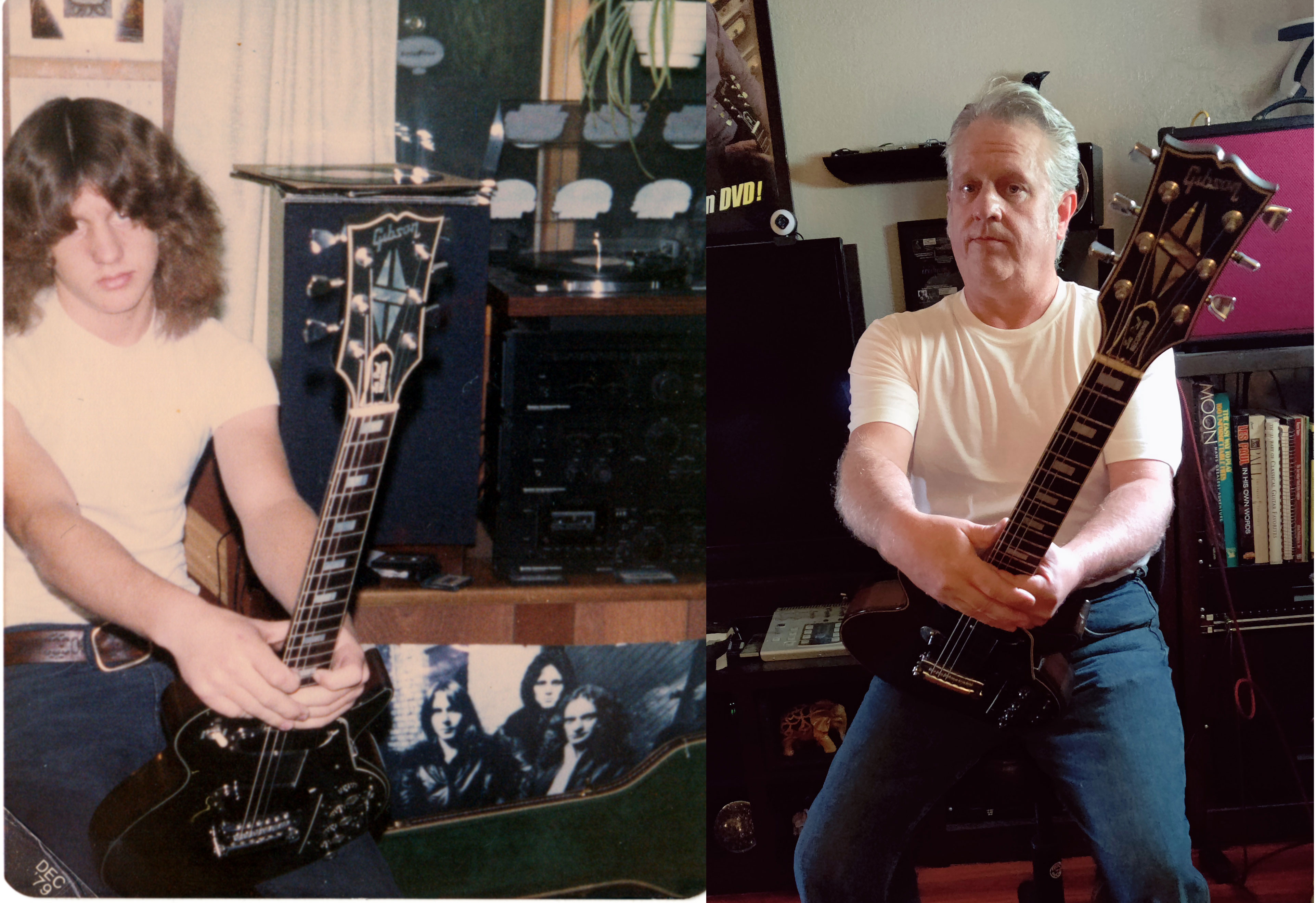
Then he got a Deluxe with a retrofitted humbucker at the bridge and found what he was after. He traded his Recording for the PA speakers his band needed. After college and studying electronics, he got a job as an electronic technician for the Goodyear Blimp and retired from playing in bands—but, of course, he never stopped playing guitar.
Cut to 2018, and he jumped at the chance to buy back that Recording he’d traded all those decades ago. He recalled the time in 1999 when he’d mentioned the guitar to Les Paul after one of Les’s shows at the Iridium in New York. "I told him about the trouble I’d had getting my Recording to overdrive an amp," Robert says, "and he laughed and said the impedance-matching transformer Gibson used was crap. He asked if I still had the guitar, and I told him I’d traded it to a buddy. He told me I needed to get it back because my mother bought it for me!"
Robert reconsidered his retrieved Recording in the light of his electronics background and the insight from that long chat with Les in New York. Also, Les had put Robert in contact with Chuck Burge, who had worked on the Gibson originals in Kalamazoo and was still making pickups for Les. Remembering how Les had stressed the transformer as a critical element, Robert began researching impedance matching units, discovering that the trick is to select a matching transformer with what’s called "selectable primaries."
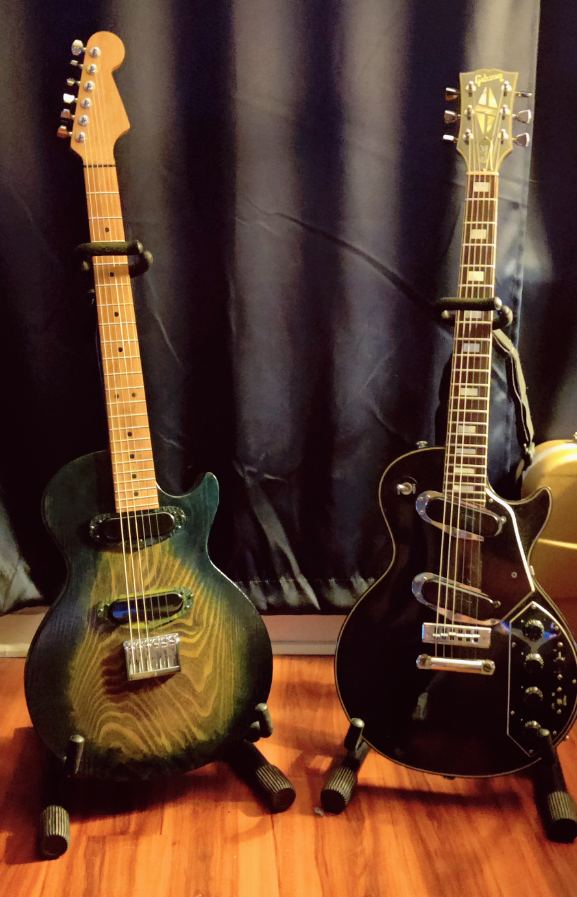
"The transformer that Gibson supplied—built into the Recording and external to the shortlived Personal and Professional—needs to be matched to the inductance of the pickups," Robert explains. "Pickup manufacturers generally stress DC resistance [DCR] and neglect inductance. It’s imperative to know that the Les Paul low-impedance pickups have a DCR of 10 ohms and an inductance of 8 millihenries, whereas a typical pickup has a DCR of thousands of ohms and inductance in the henries. After picking a proper transformer, I finally realized that a 12-year-old me picked out the perfect guitar for a 58-year-old me!"
Now Robert has plans to offer in 2024 a guitar line with his reverse-engineered low-impedance pickups on board, and he’s busy completing a demonstration video that also includes a brief history of Les Paul’s love affair with low impedance.
"I set out to prove that low impedance was, in fact, capable of producing any sound," he says, "just as Les had originally claimed it could in the promotional flexi-disc Gibson made to promote the Recording guitar. The problem was that no one, including a young me, could do this back then. And the funny thing is that all it took was to understand the selection and use of the matching transformer—something Gibson could have done better."
About the author: Tony Bacon writes about musical instruments, musicians, and music. His books include The Les Paul Guitar Book and Electric Guitars: Design & Invention. Tony lives in Bristol, England. More info at tonybacon.co.uk.

